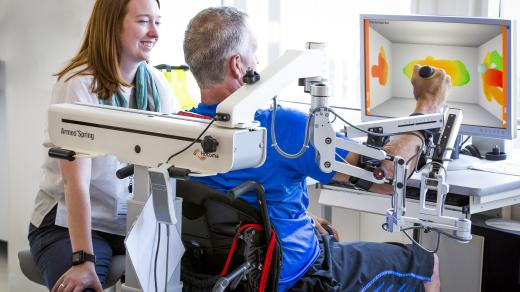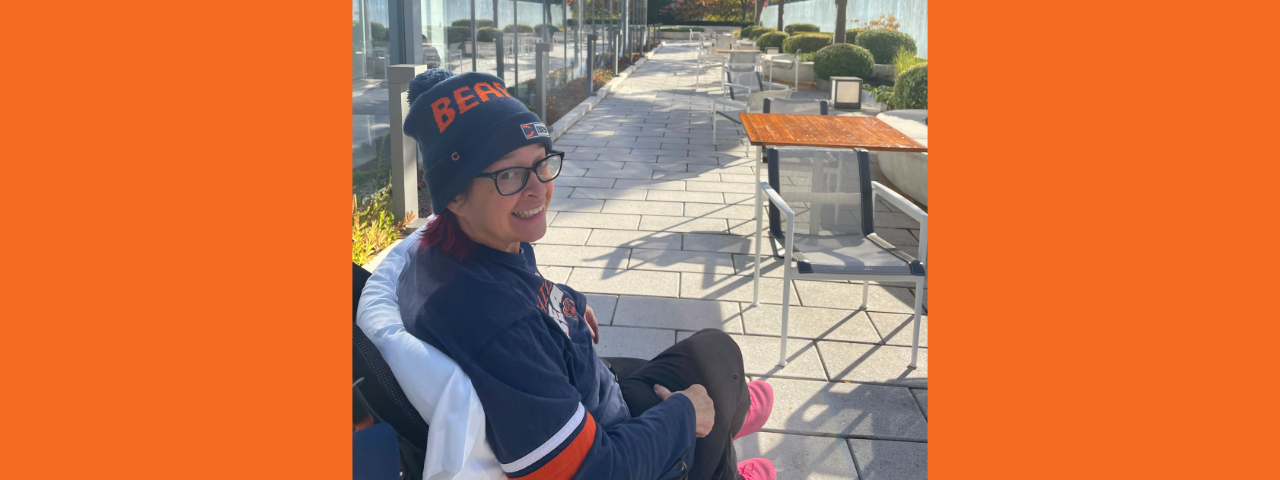"At moments of great pain, we have an opportunity to re-invent ourselves."
Body
The famous scene is set: Richard III, the newly-crowned King of England, surveys his troops and subjects at his coronation. Though these characters lived in fifteenth century Europe, the act playing out in a Chicago theater features a 2016 breakthrough as Richard strides across the stage – in a ReWalk exoskeleton.
The Gift Theatre’s performance of Shakespeare’s Richard III, opening March 10, blends technology with art as the first live theater production to include a wearable robotic exoskeleton.
Chicago’s own Michael Patrick Thornton, formerly of ABC’s Private Practice, stars as Richard III, one of history’s most notorious characters. While most actors who portray Richard are able-bodied and thus adopt a hunched back, weak arm and limp, Thornton brings personal experience to the role. The actor suffered two spinal strokes in 2003 that resulted in a spinal cord injury rendering him with incomplete paralysis.
Thornton sought treatment at RIC for his strokes. Through intensive therapy, including the recitation of Shakespearian soliloquies, Thornton regained his ability to speak and act.
“As I inhabit the character of Richard III, I often return in my heart and memory to my time at RIC – the physical and mental strength I had to find there. At moments of great pain, we have an opportunity to re-invent ourselves. In many different ways, that is precisely what both I and Richard have done,” said Thornton. “Performing this role allows me to bring to life one of the most well-known literary characters, often played by able-bodied actors, by using my personal journey and assistive devices like the ReWalk to redefine ability and Richard forever.”
All the World’s a Stage
Body
RIC now serves as the lead sponsor of The Gift’s production and has managed Thornton’s preparation for the starring role. RIC worked with ReWalk, maker of the only exoskeleton system cleared by the FDA for both personal use and use in a rehabilitation setting in the United States, to enable this new exploration of Richard III.
“Michael’s performance is a testament to what’s possible,” said Peggy Kirk, senior vice president and chief clinical operating officer at RIC. “Following his spinal strokes, he’s been able to resume work that is very meaningful to him while sending an important message about human ability. His use of the ReWalk allows him to present Richard’s variable character in a unique and powerful way, and we are honored to partner with him on this creative venture.”
RIC research scientist Arun Jayaraman, PhD and PT, and physical therapists Kate Scanlan and Kristen Hohl have worked with Thornton on training in the exoskeleton for months. Scanlan and Hohl are alternating appearing in each production in full costume beside Thornton.
ReWalk is a wearable robotic exoskeleton that provides powered hip and knee motion to enable individuals with spinal cord injuries to stand upright and walk. The system provides user-initiated mobility through the integration of a wearable brace support, a computer-based control system and motion sensors. The system allows independent, controlled walking while mimicking the natural gait patterns of the legs.
“ReWalk is thrilled to see Michael Patrick Thornton using exoskeleton technology to stand tall and walk proudly as King Richard III,” said ReWalk Robotics CEO Larry Jasinski. “Michael is helping to blaze new trails in what it means for someone with a spinal cord injury to use exoskeleton technology to return to work, daily life and one’s community. We look forward to continued collaboration with RIC and its patients to introduce wearable robotics to the spinal cord injury community.”
Said Thornton, “With RIC’s care and ReWalk’s assistance, both Richard and I can now be seen however we want.”


